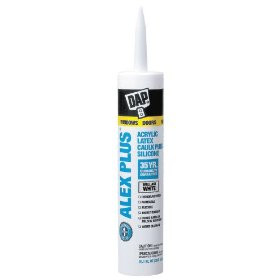It's hard to go a day without seeing at least one of the bearded faces from Duck Dynasty. I haven't watched every season, but I've seen enough episodes to have a favorite; it's the one where the guys have a doughnut eating contest, Si wins, has the winning raffle ticket for the camper, and wakes up out in the woods.
My sister gave me Phil's book Happy, Happy, Happy: My Life and Legacy As the Duck Commander for my birthday this past summer and I wanted to share one specific story from it that may be eye-opening for some DIY home renovators.
 Halfway through the autobiography the Duck Dynasty patriarch tells of the early days starting Duck Commander. He received a $25,000, interest free loan from a businessman at his church. This was his start up money and at the top of his list was a lathe to create the duck call barrels. He shopped around and located the equipment he needed in Arkansas. The man asked him how much he had to spend and Phil told him...twenty five thousand dollars. At the time it seemed like a blessing because the seller advised him that the lathe he was selling was priced at $24,985. In hind sight it may have been a tongue in cheek figure, but Phil didn't get the joke and paid the price. Later he realized that the big tool was really worth only $5,000 and the bearded duck hunter writes that it took the family nearly a decade to recover from this con.
Halfway through the autobiography the Duck Dynasty patriarch tells of the early days starting Duck Commander. He received a $25,000, interest free loan from a businessman at his church. This was his start up money and at the top of his list was a lathe to create the duck call barrels. He shopped around and located the equipment he needed in Arkansas. The man asked him how much he had to spend and Phil told him...twenty five thousand dollars. At the time it seemed like a blessing because the seller advised him that the lathe he was selling was priced at $24,985. In hind sight it may have been a tongue in cheek figure, but Phil didn't get the joke and paid the price. Later he realized that the big tool was really worth only $5,000 and the bearded duck hunter writes that it took the family nearly a decade to recover from this con.
If you've read many of my posts you know what I'd have told him: "Get at least three prices on things when you don't know the value." Three is good, four is better, and five is ideal. It would have taken some time and effort for Mr. Phil to find two or three other lathes up for sale, but it would've been time well spent. This is easy for me to say, but I will also credit this mindfulness to a large company I worked for that helped me learn this before I was out working for myself.
Comparable scenarios happen all the time in the home renovation world. The greener you look, the more tempted the wrong contractor will be to try to sucker you in to paying too much. It's real simple. They ask you something like, "How much do you have to spend?" And you naively answer the question. Then oftentimes they try to do you the way that guy did Phil and if you're not careful you'll be into an agreement for something very close to the number you shared or something much higher than you should pay... which to me is just as bad. This is not the way it should work though. You simply tell them what you want and they give you a number. Then, you repeat the same basic scope description (apples to apples) to comparable tradespeople and wait for them to tell you what it will cost in the form of a written quote or bid. Be straight up with them about what type of work you want them to quote and expect them to be straight forward with you in return. Ignore any assurances that "Everyone will do the work for some similar price," or "No one will do it cheaper," and push ahead to get more prices.
Also, I'm ready to haggle at a flea market, in a pawn shop for used tools, or when I'm buying a car, but with contractors quoting me for work, I don't go that route. Construction renovating is a team effort and I don't do my teammates that way. I ask them to just give me their best price from the beginning so they can "still make money." Then I let them take it from there to get as tight as they can with their figures. I review the bids and choose the best contractor for the job. Sometimes it's the low number, but not always. (For more on this topic see Push Hard to Get Quotes.)
So if you want to be happy, happy, happy, don't tell everyone at the poker table what cards you're holding and don't tell bidding contractors how much money you have to spend. Be ready when they ask, but keep your budget details to yourself.
My sister gave me Phil's book Happy, Happy, Happy: My Life and Legacy As the Duck Commander for my birthday this past summer and I wanted to share one specific story from it that may be eye-opening for some DIY home renovators.
 Halfway through the autobiography the Duck Dynasty patriarch tells of the early days starting Duck Commander. He received a $25,000, interest free loan from a businessman at his church. This was his start up money and at the top of his list was a lathe to create the duck call barrels. He shopped around and located the equipment he needed in Arkansas. The man asked him how much he had to spend and Phil told him...twenty five thousand dollars. At the time it seemed like a blessing because the seller advised him that the lathe he was selling was priced at $24,985. In hind sight it may have been a tongue in cheek figure, but Phil didn't get the joke and paid the price. Later he realized that the big tool was really worth only $5,000 and the bearded duck hunter writes that it took the family nearly a decade to recover from this con.
Halfway through the autobiography the Duck Dynasty patriarch tells of the early days starting Duck Commander. He received a $25,000, interest free loan from a businessman at his church. This was his start up money and at the top of his list was a lathe to create the duck call barrels. He shopped around and located the equipment he needed in Arkansas. The man asked him how much he had to spend and Phil told him...twenty five thousand dollars. At the time it seemed like a blessing because the seller advised him that the lathe he was selling was priced at $24,985. In hind sight it may have been a tongue in cheek figure, but Phil didn't get the joke and paid the price. Later he realized that the big tool was really worth only $5,000 and the bearded duck hunter writes that it took the family nearly a decade to recover from this con.If you've read many of my posts you know what I'd have told him: "Get at least three prices on things when you don't know the value." Three is good, four is better, and five is ideal. It would have taken some time and effort for Mr. Phil to find two or three other lathes up for sale, but it would've been time well spent. This is easy for me to say, but I will also credit this mindfulness to a large company I worked for that helped me learn this before I was out working for myself.
Comparable scenarios happen all the time in the home renovation world. The greener you look, the more tempted the wrong contractor will be to try to sucker you in to paying too much. It's real simple. They ask you something like, "How much do you have to spend?" And you naively answer the question. Then oftentimes they try to do you the way that guy did Phil and if you're not careful you'll be into an agreement for something very close to the number you shared or something much higher than you should pay... which to me is just as bad. This is not the way it should work though. You simply tell them what you want and they give you a number. Then, you repeat the same basic scope description (apples to apples) to comparable tradespeople and wait for them to tell you what it will cost in the form of a written quote or bid. Be straight up with them about what type of work you want them to quote and expect them to be straight forward with you in return. Ignore any assurances that "Everyone will do the work for some similar price," or "No one will do it cheaper," and push ahead to get more prices.
Also, I'm ready to haggle at a flea market, in a pawn shop for used tools, or when I'm buying a car, but with contractors quoting me for work, I don't go that route. Construction renovating is a team effort and I don't do my teammates that way. I ask them to just give me their best price from the beginning so they can "still make money." Then I let them take it from there to get as tight as they can with their figures. I review the bids and choose the best contractor for the job. Sometimes it's the low number, but not always. (For more on this topic see Push Hard to Get Quotes.)
So if you want to be happy, happy, happy, don't tell everyone at the poker table what cards you're holding and don't tell bidding contractors how much money you have to spend. Be ready when they ask, but keep your budget details to yourself.







